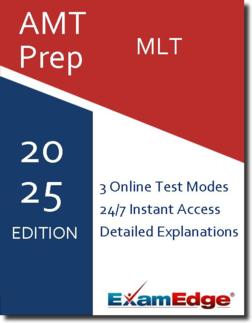AMT MLT (MLT) Practice Tests & Test Prep by Exam Edge - Blogs
Based on 37 Reviews
- Real Exam Simulation: Timed questions and matching content build comfort for your AMT MLT test day.
- Instant, 24/7 Access: Web-based AMT Medical Laboratory Technician practice exams with no software needed.
- Clear Explanations: Step-by-step answers and explanations for your AMT exam to strengthen understanding.
- Boosted Confidence: Reduces anxiety and improves test-taking skills to ace your AMT Medical Laboratory Technician (MLT).



